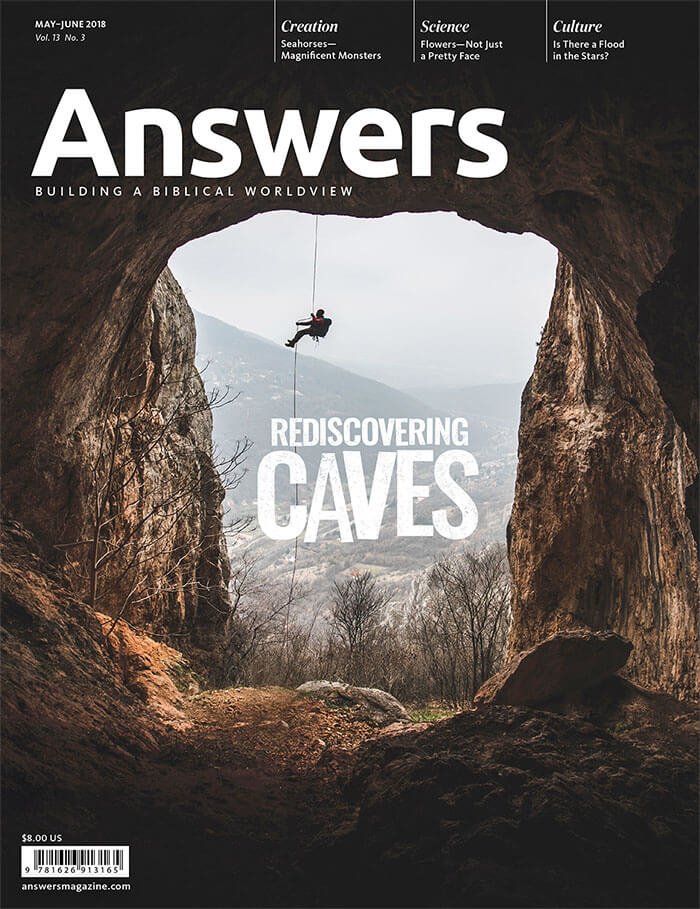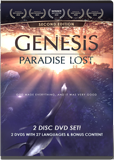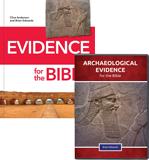The History of the Universe
In Seven Bible Verses
No matter what the song claims, it’s not a small world after all. This bumpy spheroid we call earth has a circumference that spans almost 25,000 miles at the equator. That gives us roughly 200,000,000 square miles of surface area, with about 57,500,000 of that being land (give or take some ice-obscured areas of Antarctica).
And what does that tell us? It tells us God wanted a big canvas.
On these rocky shores and towering mountains, on these far-reaching steppes and dew-drenched valleys, God had a saga planned. An epic he’d plotted before the first raindrop rolled off a leaf, before the first comet streaked through the solar system, before light itself broke into the darkness of nothingness.
God is writing his-story here—on this whirling blue planet. And he placed this unique globe in an absolutely huge universe, which is the stage you’d expect for a God-size plan. I’d tell you how big our universe is, but we really can’t be sure. The best estimate we have for what we can see of the universe is roughly 92 billion light-years from one end to the other (a light-year is the distance light travels in a year). And the part we can’t see could be many, many times bigger than that—in other words, so big our brains get tangled up in knots even trying to comprehend it.
But having such a colossal universe as the setting for such an impressive planet on which such a big narrative plays out doesn’t mean explaining that history—and future—has to be a big, complicated task. In fact, you can get the core facts in seven short, easy-to-remember Bible verses.
Let’s just put this caveat out there: You should definitely read the whole Bible—multiple times—and really dig in. There’s much, much more to the account. Got it? Good. But you can distill the essence of what God’s Word teaches about the past, present, and future in a way that makes it easier to discuss and share.
In other words, if you take hold of these seven verses, you can sum up the universe and everything in it in a simple way that’s easy to explain to anyone.
Ready? Let’s go!

Illustration by Chris Koelle
In the beginning, God created the heavens and the earth. (Genesis 1:1)
We could do a detailed study of the Hebrew here and unfold this passage with all its linguistic nuances. But that’s not really necessary. The message is clear: God directly and personally created the universe from nothing.
That may seem simple, but it’s not. You see, when you start with the idea that a holy, righteous, perfect, powerful God created the universe, you start laying the groundwork for some hefty theological concepts. 1) We are here because he made us. 2) He’s in charge of everything, including us. 3) He determines right and wrong in the universe he made and rules over. And on and on.
It also means God interacts with his creation—and has from the very beginning. He’s not a distant, uncaring Creator; he’s the only true God, and he’s willing to get his hands dirty by taking part in his creation (literally—Jesus washed his disciples’ dusty feet). He has a perfect plan, and he’s powerful enough—all-powerful, in fact—to make it happen.
What else? That further tells us we can trust the eyewitness book he gave us (the Bible). An always-there, all-power-in-his-hands Creator can easily tell us exactly what he wanted us to know—and he did.
Go Deeper
The Genesis 1 account lays out an incredible picture of how God made the world in a single week. Just look at all those ordinal numbers (first, second, third . . .). This isn’t an artistic, wishy-washy story of billions of years wrapped up in flowery, metaphorical language. This is the fresh, vivid portrayal of an eyewitness.
God doesn’t need long periods of time or primordial goo to get his act together. He’s quite capable of making a fully functioning universe in six 24-hour days and resting on the seventh. And he tells us that’s exactly what he did.

Illustration by Chris Koelle
But of the tree of the knowledge of good and evil you shall not eat, for in the day that you eat of it you shall surely die. (Genesis 2:17)
So, God created the universe and the first man and woman and declared the status of this galactic garden “very good.” What does that mean? Oh, just that there was no suffering, no death, no destruction, no backbreaking labor (in every sense of the word backbreaking). God doesn’t use “very good” lightly. He meant it.
But then we come to the as-yet-unnamed Adam and Eve. They enjoyed close access to their Creator, apparently including regular conversations with him. Even those face-to-face meetings with God couldn’t keep them from breaking the one rule he’d given them.
When Adam disobeyed, God cursed the creation as punishment. Everything broke under the weight of that curse. Cancer wormed its way in, animals began eating each other, and death—that great enemy—set up shop in our now-crumbling universe.
It’s the most foundational answer to the question everyone asks: “Why God? Why did this happen?” Because we’re sinful humans who live in a fallen creation.
But that’s not the end of God’s plan, as we’ll see.
Go Deeper
The curse in response to Adam’s disobedience gave rise to every bad thing in our world—from salmonella poisoning to tsunamis. God intended a world without death, but that depended on obedience—our obedience.

Illustration by Chris Koelle
He blotted out every living thing that was on the face of the ground, man and animals and creeping things and birds of the heavens. They were blotted out from the earth. Only Noah was left, and those who were with him in the ark. (Genesis 7:23)
After Adam disobeyed, things got bad—really bad. People’s sin stunk, and God had to do something about it. He can’t just leave sin unpunished, because that would go against who he is. He’s loving and also the Judge of sin. Those aren’t opposites.
So, our Creator sent a global flood to destroy every human and every air-breathing animal that lived on land. Every one except those onboard the ark. The Bible calls Noah a preacher of righteousness (2 Peter 2:5). Does that mean he warned others of the coming judgment? The Bible doesn’t say, but he was building a huge ship to prepare for the flood. You’d think that such a massive construction project would be a pretty graphic warning.
Go Deeper
The account of the flood explains several things about our world.
- The action of the water and sediment during the flood laid down many of the fossils and rock layers beneath our feet.
- All the animals in our world today descended from the animal kinds that boarded the ark. For that matter, all people descended from Noah’s three sons and three daughters-in-law.
- The flood couldn’t have been local because God promised never to cause a flood like that again (Genesis 9:11)—not to mention that the waters covered all the mountains (Genesis 7:19).
More important, though, the flood shows God does, and will, punish sin.

Illustration by Chris Koelle
Therefore its name was called Babel, because there the Lord confused the language of all the earth. And from there the Lord dispersed them over the face of all the earth. (Genesis 11:9)
We’re still in the bad news section of the history of the universe. You see, after the flood, God commanded people to have babies and spread out to fill the newly reshaped earth (during the flood, the continents separated, the mountains rose, the valleys opened).
But these rabble-rousers didn’t listen. They defied the Creator of everything—the One who’d just shown how powerful he is with a cataclysmic catastrophe that carved canyons and cut cliffs. Instead of spreading out, the flood-surviving descendants stayed put and decided to build a monument to their mutiny, a sanctuary for their sin, a palace to their pride.
We call it the tower of Babel.
The thing about God’s plan is you can’t stop it. He commanded them to spread out, and that’s what would happen. They chose to do it the hard way when he came down to confuse their language and disperse them.
Go Deeper
The division and dispersion at Babel gives us a clear framework for understanding why we have the various people groups of today (especially when you combine it with the “Table of Nations” in Genesis 10). Even though we have various levels of melanin (color) in our skin and we speak very different languages, we’re all children of Adam and Eve through Noah.
After Babel, the genetic variety of humanity was quite diverse. That’s why we find Neanderthals, Homo erectus, and “Hobbits” plus many other distinct people groups in the fossil record all over Europe, Asia, Australia, the Americas, and Africa. These aren’t evolutionary dead ends; they’re fully human—even if some lived in caves.

Illustration by Chris Koelle
For God so loved the world, that he gave his only Son, that whoever believes in him should not perish but have eternal life. (John 3:16)
No matter how crazy things may have seemed (and still seem), God always had a plan. The Maker of nebulae and neutrons, the Builder of mountains and magpies, would fix this mess. God had given a taste of this plan way back in Genesis 3:15, and he whispered more and more of what would happen throughout the rest of the Old Testament.
A future descendant of Adam would come to do battle with Satan (the tempter in the garden of Eden) and bring sin and death to their knees. But those ancient prophecies didn’t describe just an ordinary man; this would also be the divine, kingly Son (Psalm 2). This would be the Creator himself becoming an actual human and coming to earth to set things right.
Imagine. The Son of God—given the name Jesus—didn’t launch a big invasion. He didn’t make a grand entrance. He came to a tiny town with no political clout (Micah 5:2). And then he grew up in a Podunk village called Nazareth.
But what a life! Jesus did what Adam couldn’t. He lived in complete obedience to his Heavenly Father and shared the message that God would one day take the curse, crumple it up, and throw it away. He even gave examples as he healed, fed huge crowds, and raised the dead (we’re talking people dead four days and stinking, then walking right out of the grave).
Of course, Jesus’ obedience had a settled-upon end that a prophet in Jerusalem had foretold many years before (Isaiah 52–53). That end? Death.
Go Deeper
Jesus came to share good news (we’ll talk more about that in a moment), to set people free, and to seek and save the lost. He came to give life—something that Adam’s disobedience had stolen. He truly invaded our broken world and brought light into darkness.

Illustration by Chris Koelle
In this is love, not that we have loved God but that he loved us and sent his Son to be the propitiation for our sins. (1 John 4:10)
So, the Creator of everything—Jesus—added humanity to the mix, lived a perfectly obedient life . . . and then died? Yes! For one very important reason: It’s either him or you.
Let’s put this all together. Adam, the first man, took the fast track to death when he thumbed his nose at God’s direct command. That brought God’s curse upon our universe. The flood showed us God will judge sin (any disobedience). He can’t ignore it because he’s just and perfect in every way. Ignoring it would go against who he is.
Trouble is, we humans can’t do anything to fix the problem. We’re all sin-soaked. It’d be like trying to use a mud-covered rag to clean our faces. We’d just make a bigger mess (Isaiah 64:6).
Game over? Not so fast, my friend. Remember, God had a plan to fix the problem—something he had to do himself. Just as he saved Noah and company from the flood, he’d save a people for himself. To do so, Jesus had to take the punishment our disobedience deserves. He died on the cross to seal the deal. He died the death we should have died.
But then—this is the best part—he kicked death in the teeth and came back to life. That proved he’d won and laid the groundwork for the future.
Go Deeper
Just because Jesus died on the cross and came out of the tomb doesn’t mean we can sit on the sidelines. We have to act on what we know. Romans 10:9 puts it this way: “If you confess with your mouth that Jesus is Lord and believe in your heart that God raised him from the dead, you will be saved.
”

Illustration by Chris Koelle
He will wipe away every tear from their eyes, and death shall be no more, neither shall there be mourning, nor crying, nor pain anymore, for the former things have passed away. (Revelation 21:4)
God’s plan for this colossal, magnificent universe has a suitably colossal conclusion: Jesus, our Creator, will return to end the curse and set things right once and for all. He’ll create a new heavens and a new earth, and those who trust in his saving life, death, and resurrection will spend a pretty long time getting to be with him. How long? Try forever.
No death, no pain, no bad news anymore—that’s a fantastic deal!
Go Deeper
Of all the events in God’s unfolding plan, this is the only one that hasn’t happened yet. But it is coming. Even though we can’t know exactly when Jesus will return, we can be sure he will come. He’ll keep this promise like he’s kept all his others! And it’ll be exactly when God plans it to be.
But What About . . . ?
The Bible gives us the perfect framework for understanding our world, but it doesn’t contain every detail about its history and inner workings. You won’t find black holes in Habakkuk or specifics about the ice age in Genesis. So what about all such difficult questions from science?
Fear not! Scripture contains key details that are helping scientists solve these mysteries. Take the ice age. Something had to heat up the ocean water first so a constant stream of moisture could rise into the atmosphere and fall as thick snow. (It’s actually a head-scratcher for secular scientists.) Well, the Bible records that the worldwide flood began when “the fountains of the great deep broke open,” and any related volcanic activity would heat up the oceans dramatically. Such “explanatory power” from Genesis is helping field after field of science.
Related Videos
Bryan Osborne—Seven C’s and the Grand Canyon Formation
Answers Magazine
May–June 2018
All our lives we’ve heard that caves form slowly, over tens of thousands of years. But recent discoveries are turning old assumptions upside down.
Browse Issue SubscribeRecommended Resources

Answers in Genesis is an apologetics ministry, dedicated to helping Christians defend their faith and proclaim the good news of Jesus Christ.
- Customer Service 800.778.3390
- © 2024 Answers in Genesis







